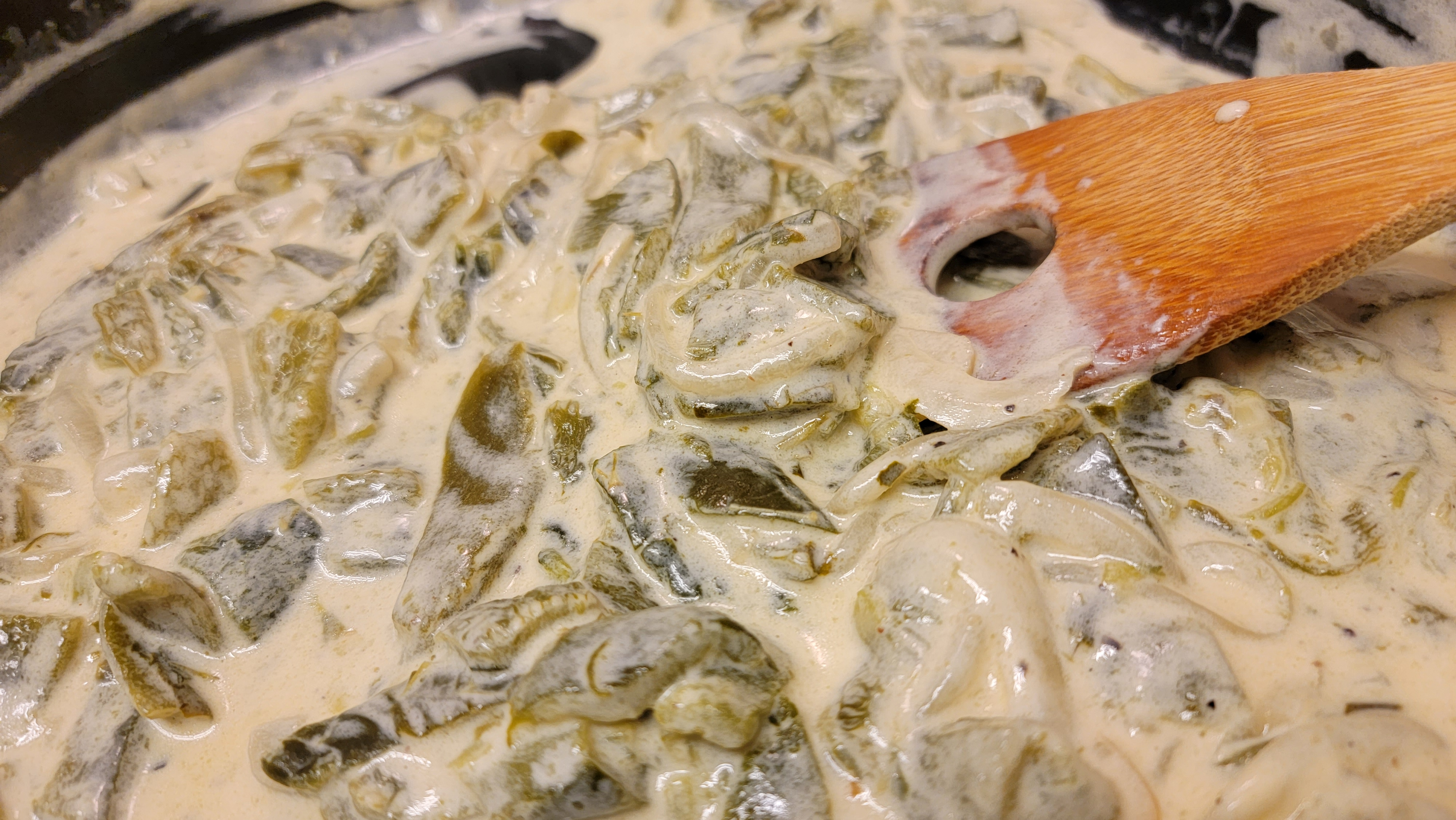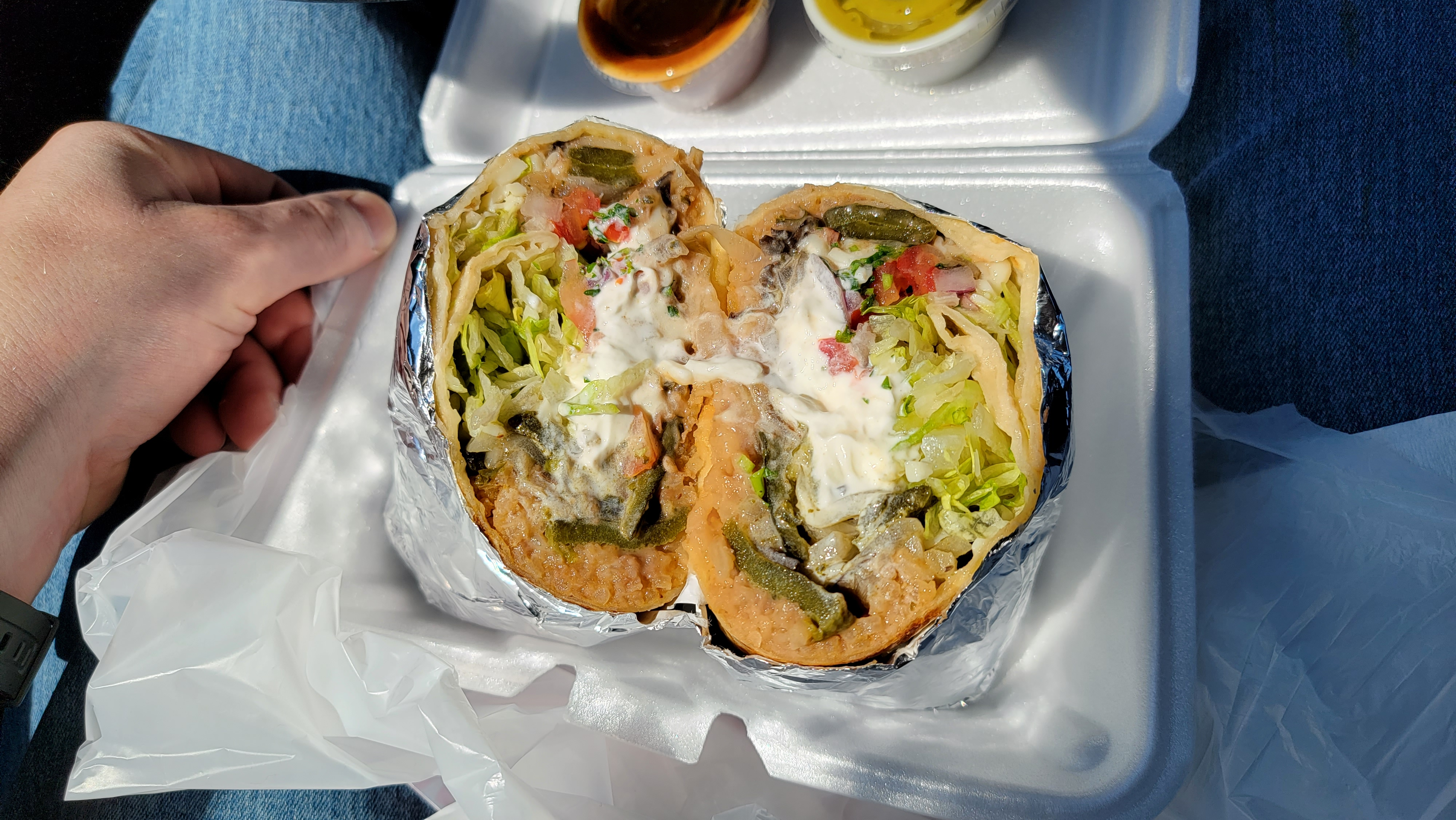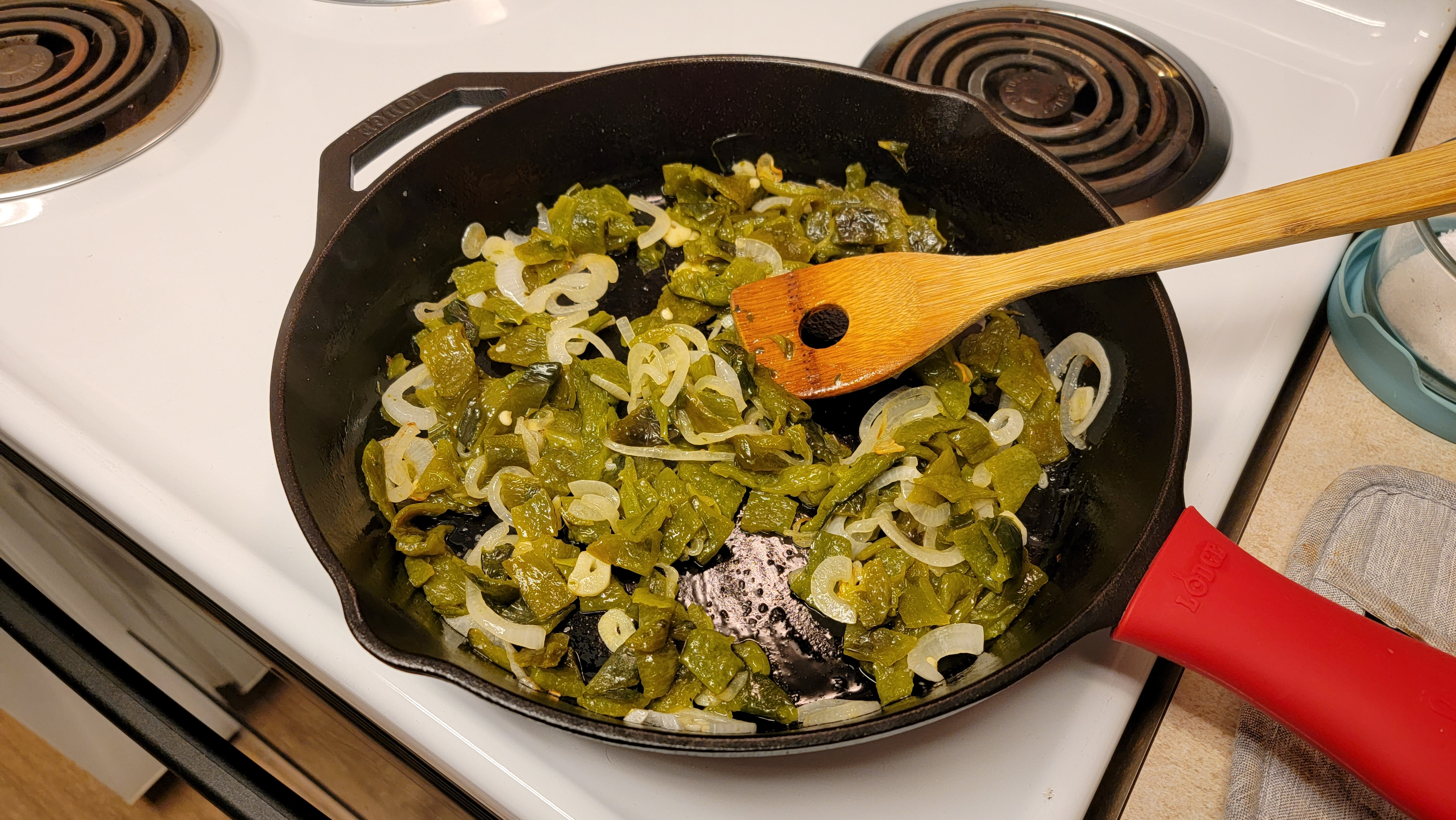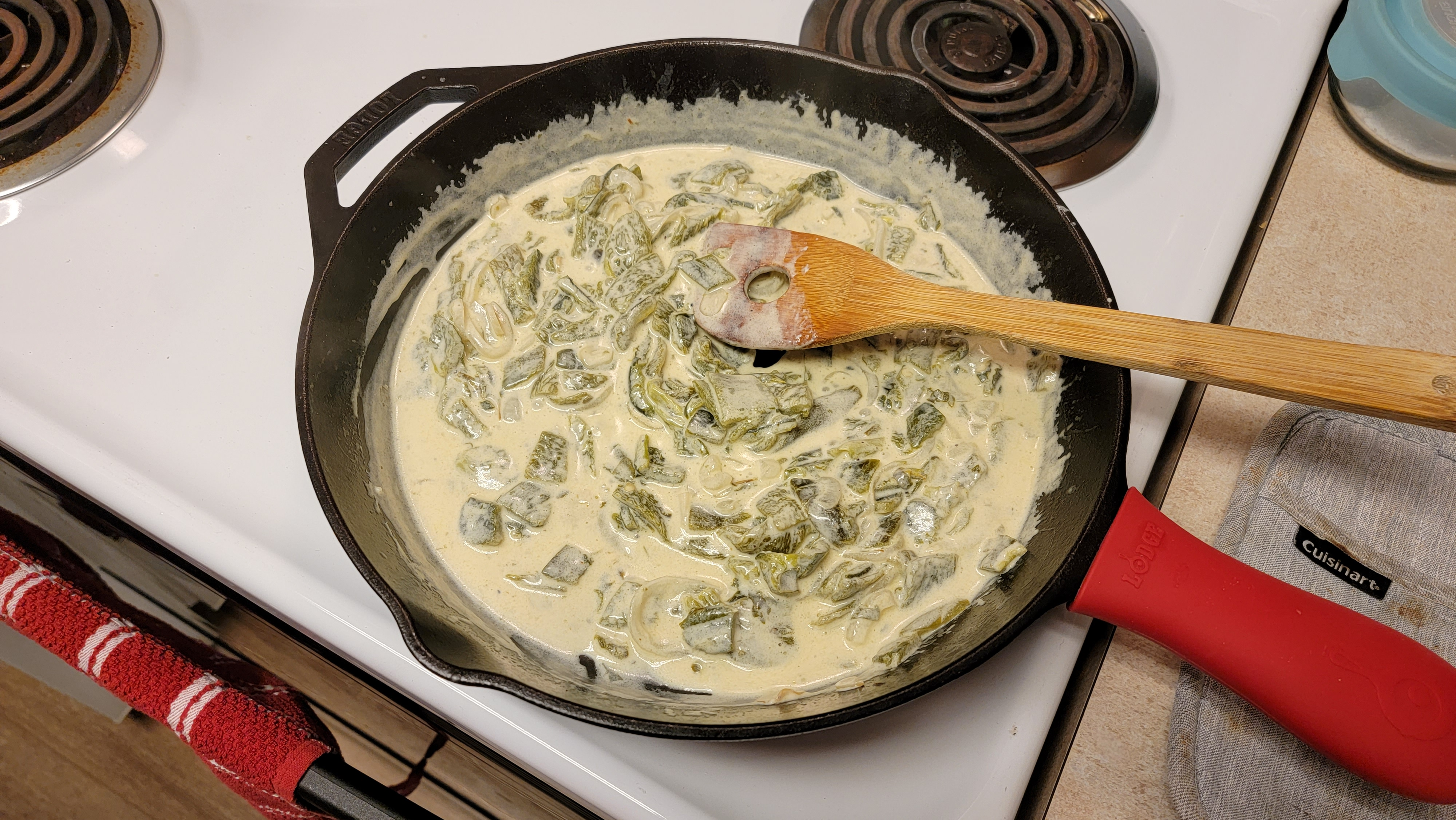The Most Underrated Burrito Filling Comes On The Side
Rajas are the unsung star of the appetizer, lunch, and dinner menu.
Hot take: Bean burritos, though tasty, are usually pretty boring. Sofritas can be great, but unless the tofu is handled properly, you'll wind up with a crumbly mess. Instead, consider this: vibrant poblano peppers charred, sliced thin, and simmered in a broth of onions, garlic, and cream. Doesn't that sound better than plain old pintos?
I'm speaking, of course, of rajas. Often served as a side dish, this popular Mexican offering is an exercise in delicious simplicity. They're generally paired with some form of tortilla, either in taco form or simply as a means of scooping. But wait—sizzling peppers wrapped in a thin flatbread? This is starting to sound familiar.

Are rajas different from fajitas?
Yes and no. As with many dishes, a name can mean different things. I'm from the Midwest, not Mexico, so I won't presume to explain the cultural intricacies around the two. What I can tell you is this: "fajitas" appears to translate literally to "little strip/little belt," while "rajas" translates to "strips." Sounds similar, no?
But in practice, the difference is significant. I'd wager most of you can visualize a plate of fajitas: seared strips of red and green pepper alongside onions and some form of meat. You can probably conjure up the sizzling sound, and the collective neck strain of every head in the restaurant turning toward it.
Rajas, meanwhile, are all about the peppers, and while poblanos are generally the species of choice, other varietals can be used. While fajitas are sliced before being kissed with the heat, the peppers in rajas are roasted whole, peeled of their blackened skin, and then sliced into strips before a quick stewing with alliums and dairy. Some cooks even add corn for an additional pop of color.
The many delicious ways to eat rajas
I've recently been inspired by a local burrito shop, where rajas are offered as a filling. From the first bite of those tangy poblanos inside my burrito, I was more or less hooked. The juiciness and char of the peppers helped cut through the richness of the beans while playing perfectly with the tangy salsa.
But according to my research, rajas are most often served as a side dish or simple taco filling; their built-in gravy makes them a natural companion for a bowl of rice, and because of their fork-tender texture you can easily bite through without dragging a full strip of pepper from your tortilla with your teeth.
This, again, sets rajas apart from the fajitas-type blend you get when you order most veggie burritos. With those onions and peppers, the rapid cooking over high heat means that the crisp texture and flavor of the ingredients is preserved. This can be wonderful, but for my money, the softness and tang of the rajas makes for a superior burrito filling.
Rajas are easy to make at home
It wasn't long before I decided to make this dish at home. I turned once more to Rick Martinez and his recipe for Rajas con Crema. The ingredient list is straightforward and simple: poblanos, onions, and garlic, along with butter, milk, and Mexican crema. There's salt, too, of course, and I won't reveal his exact measurements and techniques here. But suffice it to say, if you can toss peppers under a broiler, you can make rajas.
The results were every bit as stunning as I'd hoped. And not only is this a relatively simple recipe, it's also surprisingly economical. Calling it "healthy" might be a bit of a stretch, what with the richness of the sauce. Still, it easily qualifies as vegetarian (though definitely not vegan), and it's no less of an indulgence than a burrito chock-full of carnitas, cheese, and sour cream.
In short, I'd encourage you to give this lesser known dish a try. Perhaps you'll find it listed under the "Appetizers" section at your local Mexican restaurant, or on the menu board of a taqueria. If all else fails, grab a bag of poblanos from your grocer. However you seek it out, the flavor of rajas is worth the effort.



